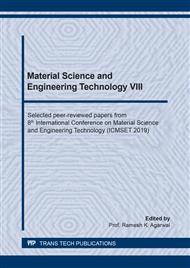p.283
p.293
p.299
p.305
p.311
p.317
p.323
p.329
p.335
The Effect of Heat Induction on Shear Strength of Soft Soil in Radial Zone
Abstract:
The main problem in infrastructure development at the soft clay was its bearing capacity therefore it needs to be improved. In this research, the improvement method was carried out by modeling in small scale of preloading and heat induction combination. Location of soft clay sampling was in Takalar, Indonesia. The purpose of this study was to investigate the change of the shear strength of soft soil corresponding with heat induction at the radial zone. The shear strength was obtained by vane shear test and compressive strength from unconfined compressive test (UCT). The heat applied ranging from 100o C, 200o C, 300o C, and 400o C with static preloading load 0.20 kg/cm2. The strengths of the soil in radial zones have been tested at R0, R1, and R2. At lowest temperature 100° at R0 the compressive strength was 0.203 kg/cm2, at highest temperature 400° at R0 the compressive strength 0.467 kg/cm2, there was a significant increasing of compressive strength value with the change of temperature. At the highest temperature 4000 the shear strength from vane shear tests resulting at R0 0.240 kg/cm2, R1 of 0.128 kg/cm2, R2 of 0.077 kg/cm2. At the lowest temperature of 100o C shows R0 at 0.116 kg/cm2, R1 at 0.070 kg/cm2, R3 of 0.046 kg/cm2. The results show a tendency of declining strength value as the soil farther away from center of heat induction. The experimental result from this model produces strength that can be used as a parameter of the foundation model on soft soil.
Info:
Periodical:
Pages:
329-334
Citation:
Online since:
June 2020
Keywords:
Price:
Сopyright:
© 2020 Trans Tech Publications Ltd. All Rights Reserved
Share:
Citation:


